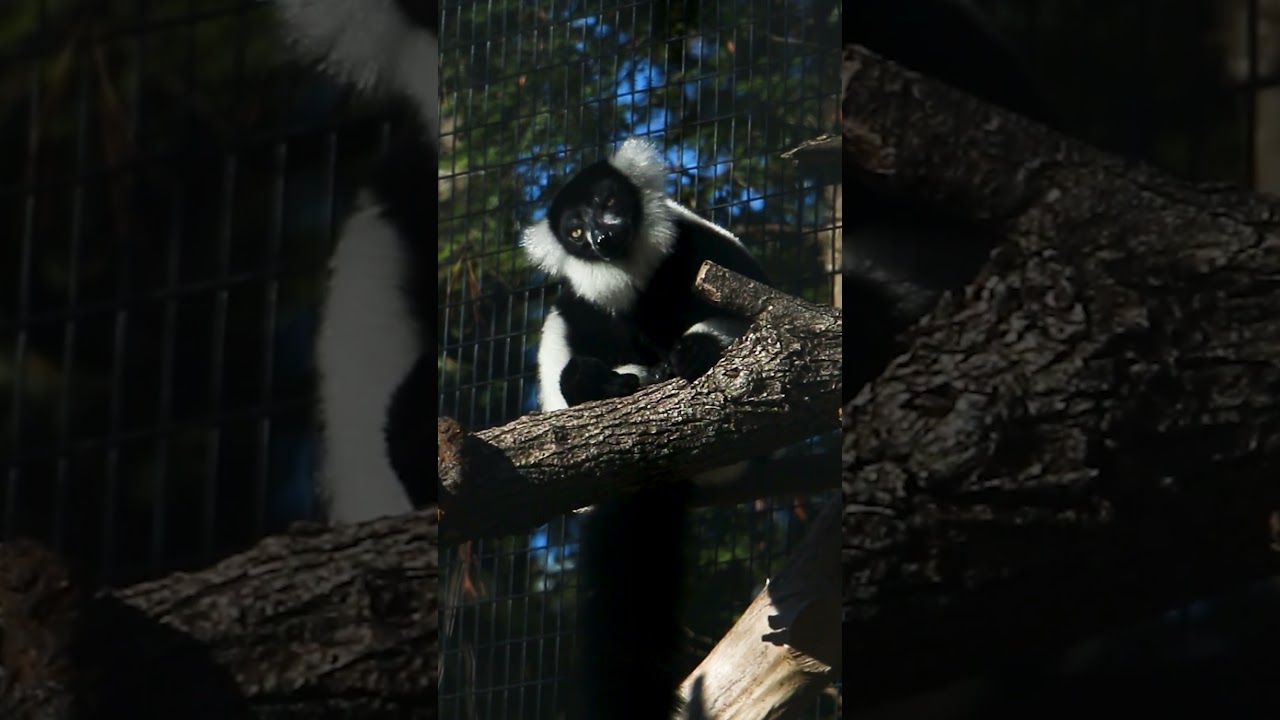– Unveiling the unexpected delight of lemur sunbathing behavior during winter at Blank Park Zoo
– Exploring how moderate winter temperatures can affect the activities of black-and-white ruffed lemurs
– Understanding the significance of sunlight for the health and welfare of lemurs in captivity
– Discovering the contrasts between typical cold-weather perceptions and the behavioral adaptations of animals during warmer winter days
As you stroll past the vibrant and bustling enclosures of the Blank Park Zoo, a curious sight might catch your attention on an unexpectedly warm winter day. Between the flurries of snow and the breath of chilly air, there lies a moment of tranquility, a peaceful scene that might initially seem out of place amidst the frost-kissed landscapes. At the heart of this scene are the black-and-white ruffed lemurs basking in the sun’s gentle warmth. This intriguing behavior beckons a closer look, inviting us to explore the unique and fascinating aspects of lemur sunbathing at the zoo.
Sunlight is not a mere backdrop for these primates—it’s a potent catalyst for physical and psychological well-being. Known scientifically as Varecia variegata, these lemurs possess a dramatic black-and-white fur that isn’t merely for show. It’s part of a fascinating biological adaptation that allows these creatures to make the most of the solar warmth available, even during the less harsh winter days.
Observing lemurs in their sun-worshipping pose, one would notice their arms stretched wide, their bellies exposed. This posture isn’t merely a product of idle leisure but a strategic position that enables them to absorb maximum sunlight. Their unique fur pattern distribution plays a key role in regulating their body temperature. As the sun’s rays penetrate their lush white fur, it heats their skin directly, while the black patches absorb and retain warmth, aiding in this thermoregulatory process.
This sunbathing is not merely about staying warm, though. Exposure to sunlight prompts the body to synthesize vitamin D, a vital nutrient for calcium absorption and bone health. For lemurs living outside their native Madagascar, in regions where the sun’s rays can be scarce, particularly during the cold season, seizing every moment of sunlight is crucial.
Beyond physical health, there lies the lemur’s psychological need for sunlight. Sunbathing can be a source of comfort and a display of innate behaviors. Much like humans, Lemurs seem to cherish warm sunlight on their skin—a pleasure that promotes natural behaviors, which are essential for their mental well-being.
What’s more intriguing is how these creatures adapt to the fluctuating meteorological whims. When you picture winter, what often comes to mind might be blankets of snow and temperatures that persuade even the most robust wildlife to seek refuge. However, the environment offers a rich tapelette of conditions. Amidst what we often expect to be a persistent cold are days when the air is uncharacteristically mild, the sun boldly asserts its presence, and animals like the black-and-white ruffed lemurs seize the opportunity to engage in their sun-soaked repose.
The careful observer might question how these seemingly contradictory elements coexist. How can one wintery habitat challenge its inhabitants with cold and simultaneously provide the occasional solar retreat? The answer lies within the dynamic equilibrium of the ecosystem and the animals’ ability to harness the diversity of their surroundings.
In their native Madagascar, these lemurs typically experience a tropical climate with ample sunshine year-round. However, at the Blank Park Zoo, they must navigate a world with four distinct seasons, each bringing its characteristic patterns. The lemurs’ flexible behavior demonstrates an impressive ability to adjust to their circumstances. Their affinity for sunbathing on warmer winter days reflects an innate urge to simulate the more tropical conditions of their homeland.
Onlookers might find it surprising that lemurs would openly seek the sun’s embrace even in winter. After all, isn’t winter the time to huddle up and hide away from the elements? This misconception speaks to the broader human tendency to categorize and simplify the nuanced patterns of animal behavior to fit seasonal expectations. But nature, in all its complexity, does not abide by such clear-cut rules. Instead, it functions through a series of nuanced adaptations and responses, each catered to the minute-to-minute shifts of the living world.
The more time one spends gazing at these lemurs luxuriating under the winter sun, the more one may ponder the essential lessons these primates can teach us. Humans often retreat to the familiar comfort of our heated homes when winter whispers its frosty tales. Yet, there is an undeniable vitality in embracing the outdoors in synchronous rhythm with our fellow living beings, even when the calendar suggests we should do otherwise.
Here lies a testament to the attentiveness and dedication of those who care for these animals. Keeping lemurs in a zoo setting, especially in places experiencing a wide temperature range, is no easy feat. It involves a deep understanding of the animals’ intrinsic needs and habits. One must ensure that even in an environment far removed from their natural habitat, these creatures can still engage in behaviors paramount to their vigor and happiness.
The sight of lemurs sunbathing during the milder winter days is both a curiosity and a reminder of nature’s resilience and versatility. It nudges us to look beyond the expected imagery of seasons and to recognize the adaptability and resourcefulness that define life. As we wrap ourselves in layers and sip on hot drinks to chase away the winter chill, we can learn from the black-and-white ruffed lemurs at Blank Park Zoo. After all, they bask not just in the comfort of the sun but also in the knowledge that warmth can be found even when and where it’s least anticipated.
*****
Source Description
The winter months aren’t always bitterly cold. Somedays are even considered warm, calling for sunbathing with the black and white ruff lemurs.

